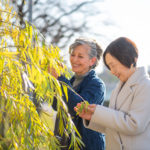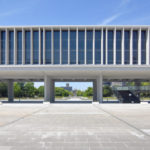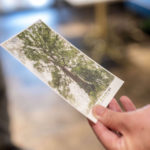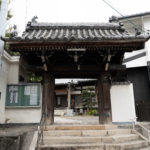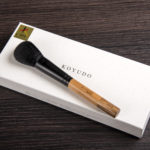Think about peace from atomic bombed buildings and trees ( Senda area )
The Senda area is in Naka Ward, Hiroshima city, about two kilometers south of the hypocenter. There were many educational facilities, including the Hiroshima University of Arts and Sciences and Senda National School. By dropping the atomic bomb, wooden buildings collapsed and burned down, killing many people.
Hiroshima University, Faculty of Science, Building 1 (it was also Hiroshima University of Literature and Science, or the building of Chugoku regional Government))


(Collection of Hiroshima Municipal Archives)
It was built in 1931 as the main building of Hiroshima University’s predecessor, Hiroshima University of Literature and Science . When it was completed, it was a three-story reinforced concrete building in the shape of a “C”, but in 1933, the center section was expanded and the building took on its present “E” shape. Located 1420 meters from the hypocenter, the building was destroyed by fire, leaving only the outer walls of the building. Most of the students were not on the campus as they were military enlisted, but some science students and foreign students from southern colonies were killed. The building is now closed and can only be seen from the outside.
Address: Hgashi senda-machi 1-1, Naka Ward, Hiroshima city
Ginkgo, Chinese Juniper , Japanese Wisteria, Camphor tree, Japanese hackberry in Senda elementary school

Ginko tree

Chinese Juniper

Japanese Wisteria

Camphor tree

Japanese hackberry
Around the schools, there are 11 trees that were exposed to the atomic bombing. The ginkgo tree was transplanted from the former Hiroshima Higher Normal School (1400 meters from the hypocenter), Chinese Juniper, Japanese wisteria and camphor tree were transplanted from the school grounds (1,640 meters from the hypocenter), and the Japanese hackberry was transplanted from a private house in Kokutaiji (The distance from the hypocenter is unknown). The hackberry tree has a large scar on the opposite side of the hypocenter. In addition to the trees, many other items related to the atomic bombing, such as stone structures and gateposts, have been preserved for peace education.
*Please go through the procedure at the school office when you visit. No entry is allowed without permission. (Reception hours: 8:30-16:50 weekdays)
Address:Higashi senda-machi 2-1-34, Naka Ward, Hiroshima city
Hiroshima Electric Railway Company’s Senda-machi electric substation and Office [Former Hiroshima Electric Railway Company’s Senda-machi electric substation and Materials Warehouse]


(Collection of Hiroshima Municipal Archives)
In 1912, two buildings were built simultaneously to house the boilers and generators of a thermal power station, which served as a tramway facility.
The power station was abolished in 1934 and became a substation.
Located 1,920 meters from the hypocenter, its interior was destroyed by fire. Although it escaped collapse and played an important role in resuming the operation of trams.
At present, the former boiler building is used as an office, and the former substation building is still in operation as a substation.
It is not allowed to enter the facilities. Please observe the site from the road.
Address: Higashi senda-machi 2-9-29, Naka Ward, Hiroshima city
Camphor tree in and around Senda Park

Today, Senda Park is a place of relaxation for the people of Hiroshima. The 22 camphor trees along its roadside were exposed to the atomic bombing at 2,030 meters from the hypocenter. This is the only spot where many trees are still standing as in their original place.
Address: Senda-machi 3-7, Naka Ward, Hiroshima city
Route Map
Think about peace from atomic bombed buildings and trees
Introducing Peace Study Projects
Cooperation with local companies to convey the importance of life through hibaku-jumoku, trees that survived the atomic bombing
JMS Co., Ltd. supports the Green Greetings Project. The objective of the project is to protect trees that survived the atomic bombing in Hiroshima, to pass them down to generations to come to disseminate information about the existence of these trees.
Cooperation with local companies to convey the importance of life through hibaku-jumoku, trees that survived the atomic bombing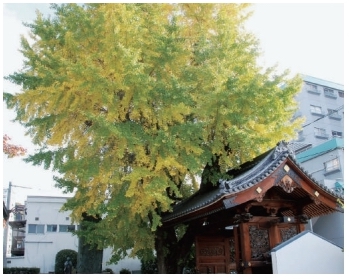
Peace Tourism (Hiroshima City)
This is for those who are interested in peace-related facilities in Hiroshima City. The appearances of the facilities before the dropping of the atomic bomb and some stories about the recovery from the ashes of the war are introduced.
Exploring “A Longing for Peace”
Tags associated with this article



